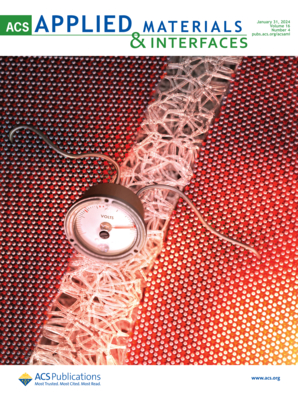Effects of Varying Nano-ZnO Concentrations on the Physiology, Biochemistry, Root Exudate, and Root Microbial Community of Agrostis Stolonifera
IF 8.3
2区 材料科学
Q1 MATERIALS SCIENCE, MULTIDISCIPLINARY
引用次数: 0
Abstract
Nanomaterials find widespread applications, but their potential harm to the environment and ecology necessitates effective recycling methods. In this study, the effects of varying nano-ZnO concentrations (0–1000 mg/kg) on the Agrostis Stolonifera’s physiological and biochemical parameters, root exudation, and root-associated microbial communities were systematically examined. At concentrations below 500 mg/kg, nano-ZnO facilitated growth in root and leaf tissues. Conversely, higher concentrations led to a reduction in chlorophyll a, chlorophyll b, and carotenoid levels, potentially impairing photosynthetic efficiency. Concurrently, malondialdehyde levels in leaf tissues escalated with increasing nano-ZnO concentrations, while the activities of peroxidase, superoxide dismutase, and catalase initially increased before diminishing. SEM-Mapping and TEM analyses substantiated the transport of nano-ZnO within Agrostis Stolonifera. At a concentration of 500 mg/kg nano-ZnO, root and leaf tissues contained Zn at levels of 0.4 wt% and 3.0 wt%, respectively. Notably, increases in zinc accumulation within both root and leaf tissues correspond with escalating concentrations of nano-ZnO. High concentrations of nano-ZnO reduce the diversity of root exudates and modify the structural characteristics of the root microbial community. Conversely, a lower concentration of nano-ZnO (250 mg/kg) is associated with an increase in root species richness and diversity, as well as a heightened relative abundance of Gemmatimonas, Bradyrhizobium, Bryobacter, and Ammoniphilus. This study is the first report to provide critical insights into nano-ZnO behavior in Agrostis Stolonifera and underscores the necessity for further investigations to elucidate root secretion mechanisms and microbial community dynamics.不同纳米氧化锌浓度对石蒜生理、生化、根渗出物和根微生物群落的影响
纳米材料应用广泛,但其对环境和生态的潜在危害需要有效的回收方法。本研究系统地考察了不同浓度(0-1000 mg/kg)的纳米氧化锌对石蒜生理生化指标、根系渗出和根系相关微生物群落的影响。浓度低于 500 毫克/千克时,纳米氧化锌可促进根和叶组织的生长。相反,浓度越高,叶绿素 a、叶绿素 b 和类胡萝卜素水平越低,光合作用效率越低。与此同时,随着纳米氧化锌浓度的增加,叶片组织中丙二醛的含量也在增加,而过氧化物酶、超氧化物歧化酶和过氧化氢酶的活性则在最初增加后减弱。SEM-Mapping 和 TEM 分析证实了纳米氧化锌在 Agrostis Stolonifera 中的迁移。当纳米氧化锌的浓度为 500 毫克/千克时,根部和叶片组织中的锌含量分别为 0.4 wt% 和 3.0 wt%。值得注意的是,根和叶组织中锌积累的增加与纳米氧化锌浓度的增加相对应。高浓度的纳米氧化锌会降低根渗出物的多样性,并改变根微生物群落的结构特征。相反,较低浓度的纳米氧化锌(250 毫克/千克)会增加根部物种的丰富性和多样性,并提高根瘤菌属(Gemmatimonas)、巴西根瘤菌属(Bradyrhizobium)、褐藻菌属(Bryobacter)和铵根瘤菌属(Ammoniphilus)的相对丰度。该研究是第一份提供有关纳米氧化锌在石蒜中的行为的重要见解的报告,并强调了进一步研究以阐明根分泌机制和微生物群落动态的必要性。
本文章由计算机程序翻译,如有差异,请以英文原文为准。
求助全文
约1分钟内获得全文
求助全文
来源期刊

ACS Applied Materials & Interfaces
工程技术-材料科学:综合
CiteScore
16.00
自引率
6.30%
发文量
4978
审稿时长
1.8 months
期刊介绍:
ACS Applied Materials & Interfaces is a leading interdisciplinary journal that brings together chemists, engineers, physicists, and biologists to explore the development and utilization of newly-discovered materials and interfacial processes for specific applications. Our journal has experienced remarkable growth since its establishment in 2009, both in terms of the number of articles published and the impact of the research showcased. We are proud to foster a truly global community, with the majority of published articles originating from outside the United States, reflecting the rapid growth of applied research worldwide.
 求助内容:
求助内容: 应助结果提醒方式:
应助结果提醒方式:


